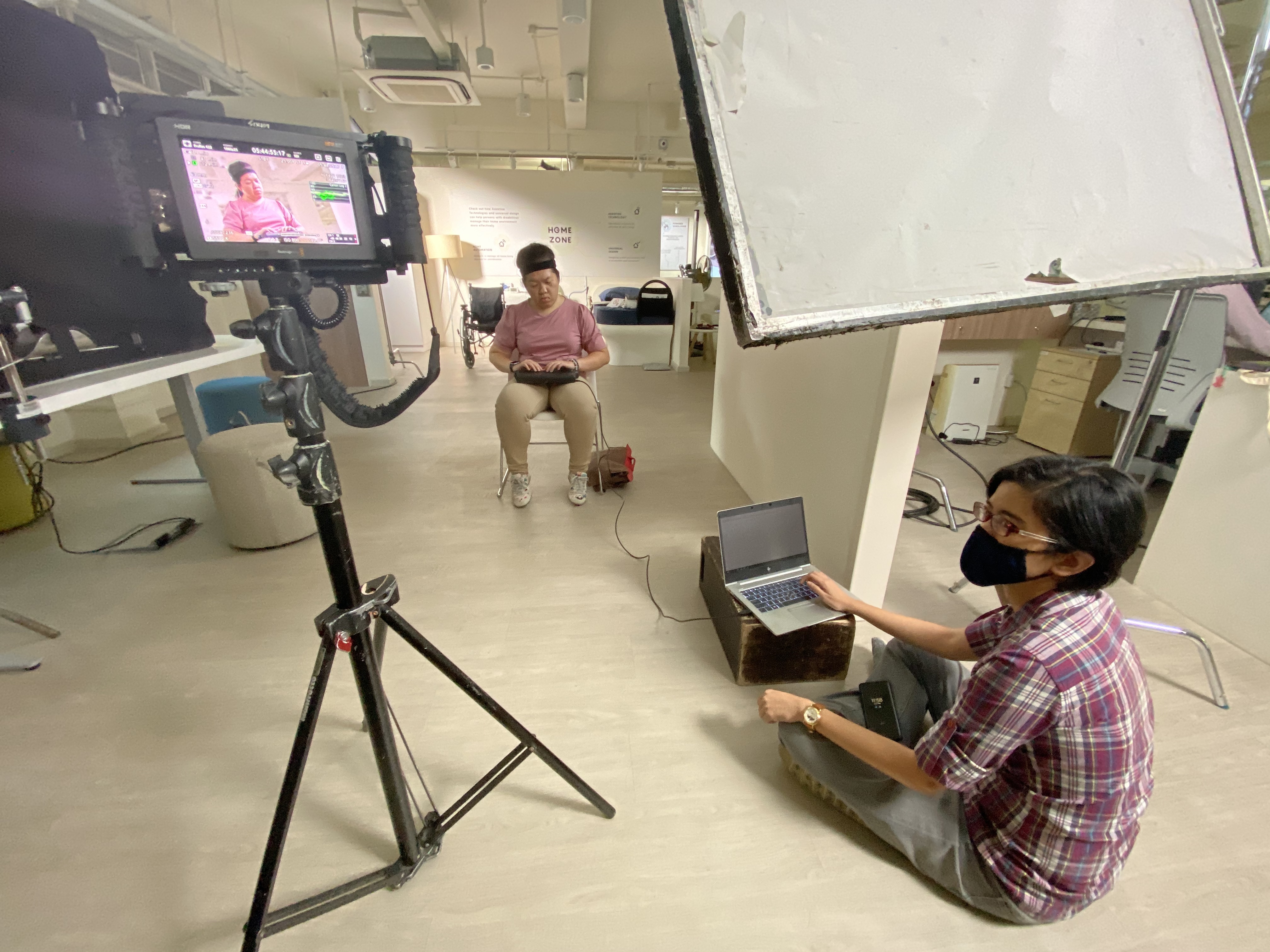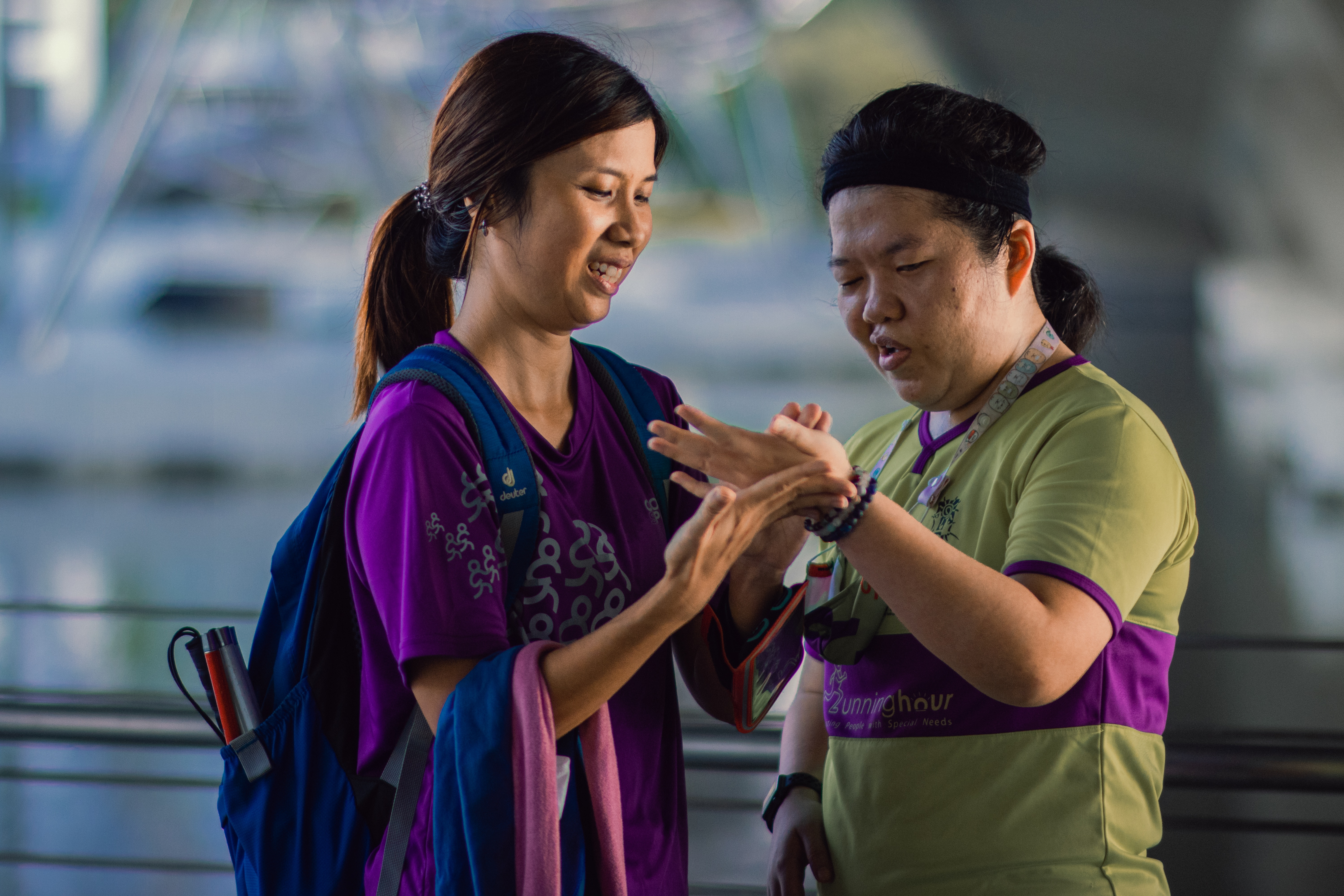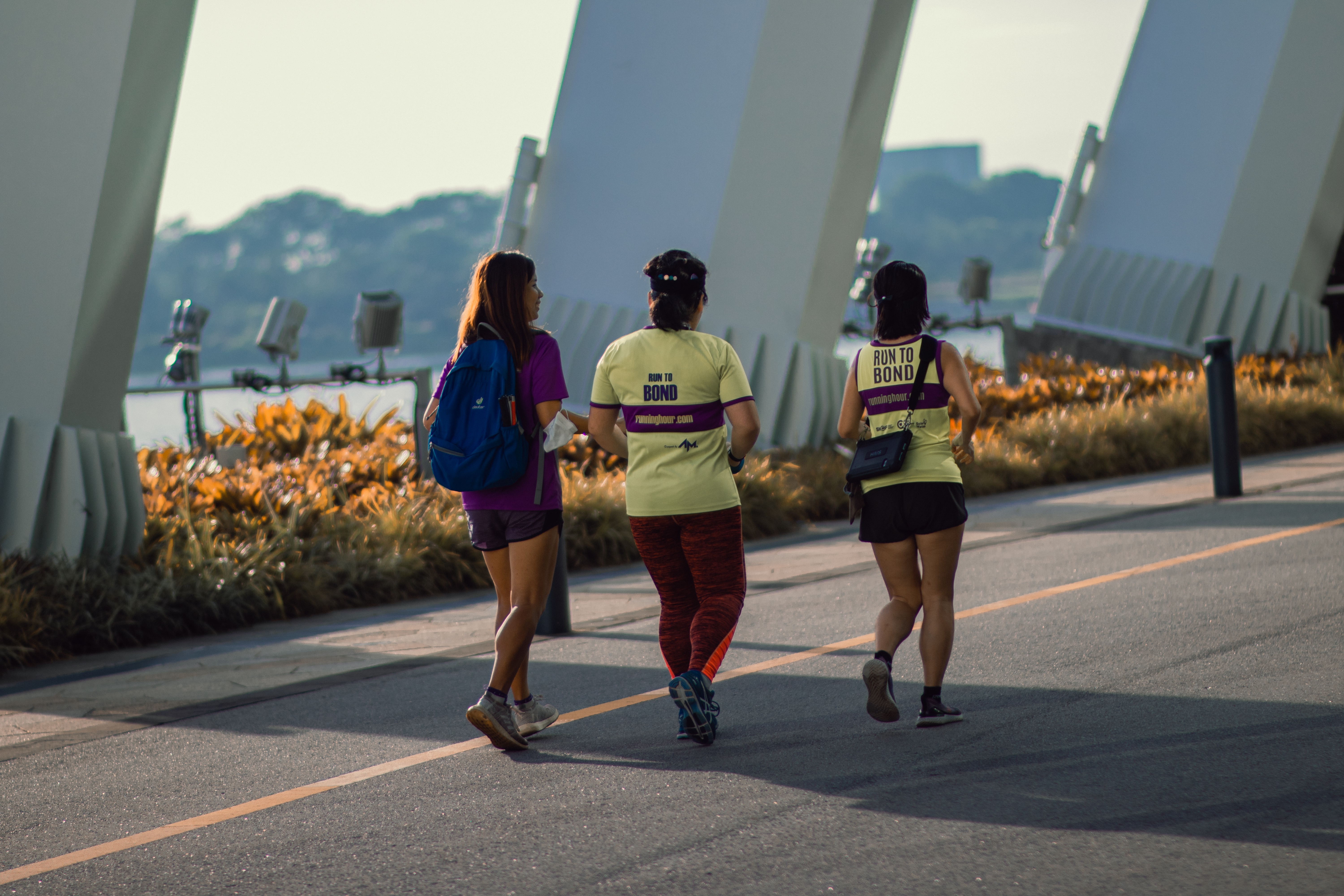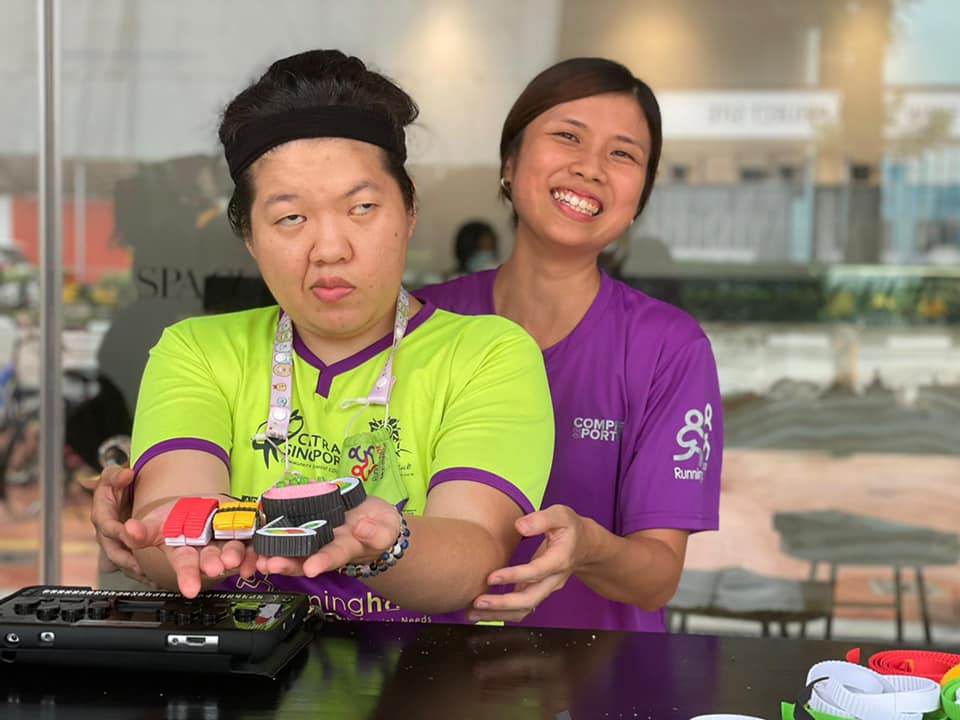A few months back, a video production house OHBOY! Pictures approached us. They were doing a documentary series called "The Digital Divide" which aims to shed light on the digital illiteracy in Singapore. They wanted to feature the disabled who have benefitted from assistive technology for work and independent living - to highlight its importance so as to broach the issue of digital illiteracy, and encourage and increase accessibilities for a more inclusive society. This filming took place in May.
The Preparation
Ahead of the filming, we requested for the interview questions to be sent to us, and my colleague ran through the questions and responses with me. We had many text messages going back and forth to check through the “script” and for factual accuracies! While it was impossible to memorise the whole script, I had fun preparing for the interview with my colleague. It is important to have a general sense of the session at the very least.
The Filming
There were two parts to the filming. One was the interview session held at Tech Able, an assistive technology resource centre, and the other was in the outdoors.
For the interview session, my colleague facilitated it by typing out the questions and responses. I will read them via my refreshable braille display and reply accordingly. True to Murphy’s law, my work laptop crashed at the session and fortunately, my colleagues were around to resolve it.

During filming, my colleagues would convey what the production crew was doing, and what the crew wanted me to do. Photo credit: SG Enable
For the filming in the outdoors, the crew joined my running guides and me on a Saturday to film some of the activities I do during my free time. I have been with this inclusive social running club, Runninghour, since 2013. Runninghour promotes inclusion through running. The club is made up of runners with and without disabilities. There are visually impaired, physically disabled, intellectually disabled, autistic persons as well as the running guides. After I lost my hearing, I actually stopped running with them. However, the Founder, John, contacted me in 2020 and asked if I was keen to run again. He worked out a tactile system for the guides to communicate with me and a group of "trained" guides was formed just like that!

One of the running guides communicating with me using the tactile system. Check out the documentary to find out how this works! Photo credit: Aqil Hamzah/ OHBOY Pictures Pte Ltd.
The fun of Filming outdoors
Every week, a pair of running guides would come pick me from my house and we will go for a jog or a walk. After which, they would take me out for breakfast and do a grocery run with me. Coupled with COVID-19’s work-from-home arrangements, they have become important human connections and helped me cope with the feeling of isolation after I became Deaf-blind.
On that particular Saturday when the crew filmed us, I met this pair of guides who had also initiated that we do crafts together. In recent months, we have embarked on what I called "The Sushi Project". We would roll strips of paper of varying colours to make sushi. The white roll-up paper for the rice, black for seaweed, green for cucumber, yellow for tamago (egg). We then glue these rolls together and they do indeed looked like sushi!

Off we jogged! Photo credits: Aqil Hamzah/ OHBOY Pictures Pte Ltd.
Our run for the shoot began from Marina Barrage and we jogged to the Helix Bridge, a distance of 2km. While that may seem short but the crew had to lug all their filming equipment and they needed to keep pace with us. However, before they even started, they first had to resolve some issues with their equipment. I then gleefully remarked that they were experiencing what I go through from time to time, that their technology is misbehaving! Since my devices are all Bluetooth-enabled, sometimes, the connectivity drops, or maybe the battery goes flat after a prolonged duration. After they were up and running, my guides and I also started running.
Our next destination was to have prawn noodles for breakfast. At this juncture, the team decided to split — the guides and I continued with our run while the crew made their way to the breakfast place. After tucking into a delicious meal of prawn noodles, we were off to continue with "The Sushi Project". This is where we would find a cafe nearby and while enjoying a good drink and desserts, we would be making the paper sushi!

The production crew wanted to do a shot of me holding the sushi we made. But I had to hold it for 30 seconds without moving, which was actually tiring after running and filming, so one of my guides is supporting my hands! Photo credit: Tan Siew Ling
That concluded the whole filming then it was hard work for the crew, to edit and produce it.
Afterthoughts
No doubt assistive technology have benefitted me, allowing me to stay connected with friends and loved ones through instant messaging and social media like Facebook. However, I still face challenges. For instance, a blind person cannot operate self-serving kiosks with a touchscreen interface, or digital boards where information is displayed. If such information is made available to users like talking ATM machines, publishing the information online in an accessible format with adding of alternative text for images, having transcripts for videos, that would definitely reduce the digital divide for the disabled. Even if I have assistive technology which are expensive and are costly to maintain and access to information, we still need the efforts of service providers, developers and designers to make their products and apps accessible to us.
For us to be a more inclusive society, we need everyone to play a part on this journey, to have accessibility in mind right from the beginning of the process. By doing so, everyone, and not just the disabled, can benefit.
I feel the documentary video was well-made and I enjoyed the filming process. Yes, filming usually takes much time. While there is the time lag while spoken words are converted to text, that takes time, I had fun experiencing lot of actions during the filming like instructions, explanations, re-takes, as well as the random shoots to have more footage. If you like, do check out the documentary at viddsee!
Persons with visual impairment can find the descriptive transcript at: https://bit.ly/TranscriptDigitalDivide
Tan Siew Ling is fully Deaf-blind, having lost both her sight and hearing to a neurological condition, Neurofibromatosis type 2 (NF2). She carries a screen reader with a Braille display, which she fondly names it as “Bear Bear”, everywhere she goes. Her humour, wordplay, and love of puns keep friends on their toes. She enjoys reading books in her free time and loves to pen down her thoughts, often on a whim, which can be entertaining at times, on her social media. When she is not writing or reading, she can be seen doing insanely 72kg leg presses or swinging a 20kg kettlebell to and fro. You can find out more about Siew Ling and her journey here.